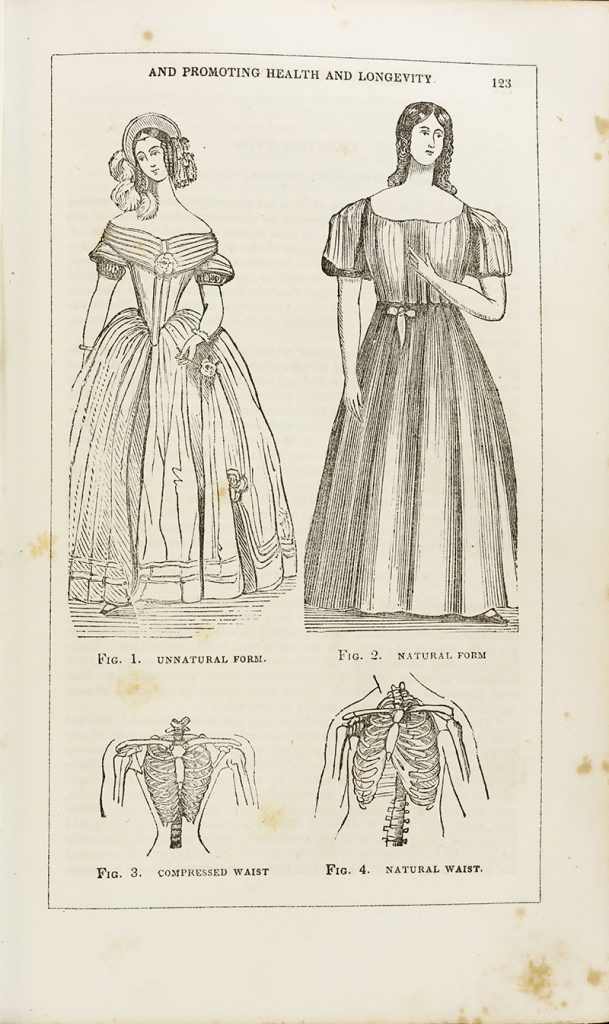
The weather is finally starting to warm up as we move into summer, which means it’s also time to switch from winter to summer clothes. This probably means cotton and short sleeves instead of wool and sweaters, but one item that will almost certainly not appear in anyone’s wardrobe, regardless of the season, is the corset.
While wearing corsets dates back to the 16th century, it is most strongly associated with 19th-century female fashion. This was the era when the hourglass figure was in vogue, and achieving that often meant wearing a very tightly laced corset – ideally, the waist would become so small that the corset-wearer “may hear the marvelous exclamation uttered by some would-be exquisite or fool, that he can span round her waist.” But even as fashion magazines disseminated images of women with tiny waists wearing dresses with full skirts, medical texts raised the alarm about the detrimental effects of extreme tight lacing.
Their biggest concern was that constricting the upper body could deform the internal organs and hinder their functions. The homeopathic physician Wooster Beach (1794-1859) declared that a tightly laced corset made it difficult to breathe properly, prevented digestion, and damaged the reproductive organs; “every man who does not wish to marry consumption, carditis, angina pectoris, or dyspepsia, beware that taper waist.” John C. Gunn, author of the extremely popular “Gunn’s Domestic Medicine,” agreed. He argued that wearing tightly laced corsets not only gave women an ugly, unnatural appearance, but also deformed the organs and made it difficult for women to breathe, eat, and give birth to healthy children. As he put it, “No species of voluntary distortion that we are acquainted with, is productive of such disastrous consequences in the loss of health and life, as is caused by this monstrous practice.”
While some of the concern about tight lacing was warranted – there’s no question that it could cause shortness of breath – some of it was also rooted in sexism. According to Gunn, women who went out of their way to display their figures were in danger of treading into territory occupied by “an unfortunate class of beings, lost to all the modesty and dignity of their sex,” and they were better off if they, “strictly respect the boundaries established by good sense and good taste, united with the lovely purity inherent in their sex.” The so-called “Ladies’ Indispensable Assistant,” published in 1852, held a similar view: “No woman who laces tight can have good shoulders, a straight spine, good lungs, sweet breath, or is fit to be a wife and mother.”
Were corsets truly a health hazard? Were women who tried to alter their figure amoral temptresses? Corsets might no longer be a commonly used undergarment, but the questions they raised about the intersections between fashion, health, and the female body still resonate today. Think about that the next time you see a fashion publication on the magazine rack.
Sources
John C. Gunn. Gunn’s New Domestic Physician: Or, Home Book of Health. Cincinnati: Moore, Wilstach, Keys, 1858.
Wooster Beach. Beach’s Family Physician and Home Guide for the Treatment of the Diseases of Men, Women, and Children. Cincinnati: Moore, Wilstach, Keys, 1860.
Ladies’ Indispensable Assistant. New York, 1852.
